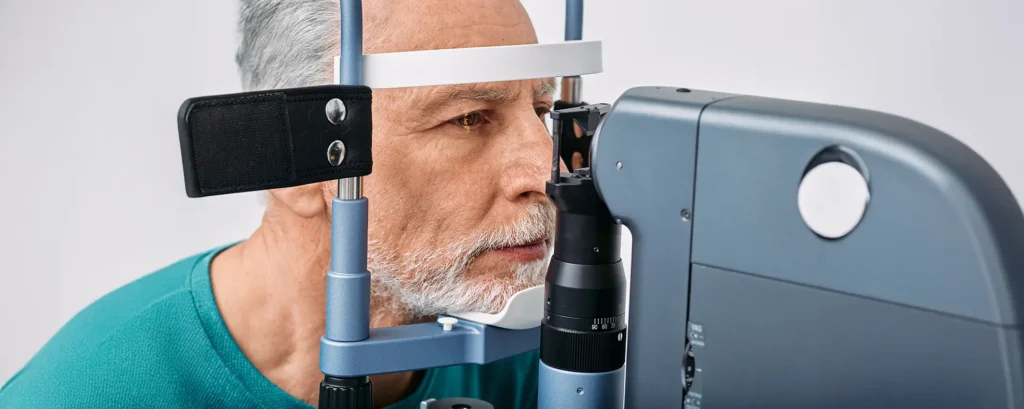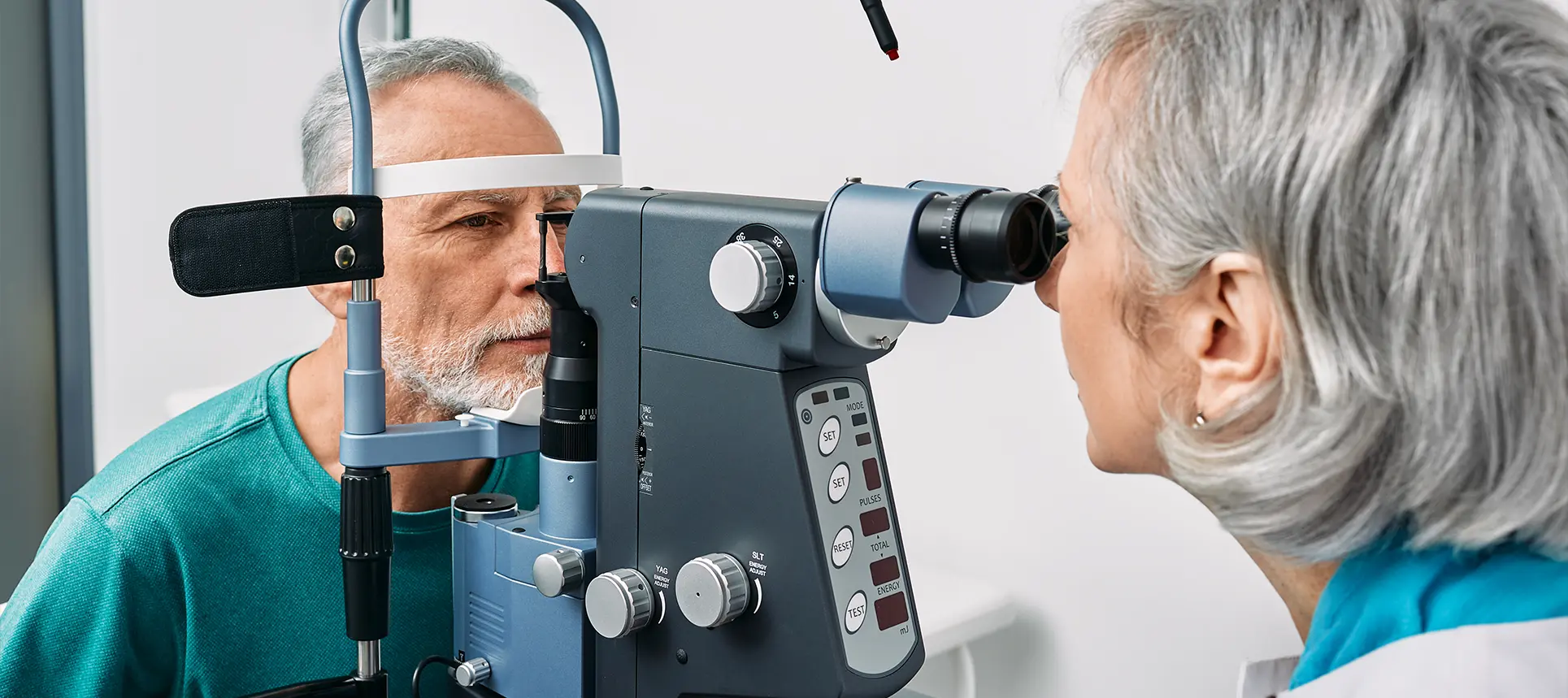Let’s start with the obvious question: can cataracts actually be reversed once they’ve started forming? If you’ve been told you need surgery or you’re looking for non-invasive treatments, the idea of simply dropping something into your eye to clear the cloudiness probably sounds like a dream. That’s where lanosterol enters the scene—a naturally occurring compound that’s got researchers, patients, and eye care professionals buzzing.
In this article, we’re going to explore everything you need to know about lanosterol-based therapies. We’ll look at the science behind it, examine what studies in animals have revealed, and talk honestly about what this could mean for humans in the future. Most importantly, we’ll separate hope from hype—so you walk away informed, not just optimistic.
First Things First: What Are Cataracts?
Before we dive into lanosterol, let’s briefly revisit what cataracts actually are. In simple terms, a cataract is when the natural lens of your eye becomes cloudy. This cloudiness stops light from reaching the retina clearly, leading to blurry vision, glare, and in some cases, complete vision loss.
There are different types of cataracts—nuclear sclerotic, cortical, and posterior subcapsular—but the result is generally the same. As we age, the proteins in our lenses start to clump together and lose their transparency. Surgery is currently the only widely accepted treatment that actually removes the clouded lens and replaces it with an artificial one.
But what if we didn’t have to remove the lens at all?

Introducing Lanosterol: The Molecule That Sparked Hope
Lanosterol is a steroid-like compound that plays a role in the biosynthesis of cholesterol and steroid hormones in the body. But it wasn’t until a team of researchers in China studied a rare genetic mutation that the real magic of lanosterol came to light.
They found that children in a particular family, born with congenital cataracts, had a mutation in the gene that produces lanosterol. This discovery raised a crucial question: could the absence of lanosterol be linked to cataract formation? And if so, could supplementing lanosterol reverse it?
This led to the idea that lanosterol might not just prevent cataracts—it could potentially dissolve the protein clumps responsible for lens cloudiness. From here, the research took off.
The Landmark Study: Zhao et al., 2015
Let’s talk about the study that brought lanosterol into the spotlight. Published in the prestigious journal Nature, the 2015 study by Zhao et al. involved three stages of testing—cell cultures, canine models, and rabbit models.
In the lab, researchers added lanosterol to human lens cells exhibiting cataract-like opacities. They observed a marked improvement in clarity and a reduction in protein aggregation. Next, they tested it in dogs with naturally occurring cataracts, and astonishingly, the lenses showed significant clearing after treatment with lanosterol injections. Finally, rabbit models also responded positively to lanosterol eye drops.
It was a jaw-dropping moment. The idea that cataracts, long believed to be irreversible without surgery, could be partially cleared using a topical solution felt revolutionary. But as with any scientific breakthrough, the real question was whether these results could be replicated—and whether they could hold up in human eyes.
So, What’s the Mechanism?
You might be wondering how lanosterol actually works. What’s happening inside the eye that allows this compound to have any effect on cataracts? At the heart of it lies protein behaviour—specifically, how proteins in the lens fold, maintain structure, and stay transparent. Cataracts form when these proteins begin to misfold and clump together, disrupting the once-clear architecture of the lens and scattering incoming light. Lanosterol’s potential power lies in its ability to intervene in this degenerative process at the molecular level.
In a healthy human lens, proteins—especially the crystallins—are designed to stay stable and transparent throughout a person’s lifetime. However, with age or genetic predisposition, they can start to unravel and clump together in messy aggregates. This is where lanosterol seems to step in. It appears to function like a molecular chaperone, binding to destabilised proteins and helping them refold into their proper shape. This stabilisation reduces their tendency to form the dense, insoluble clumps that cloud vision and characterise cataracts.
Laboratory observations suggest that lanosterol increases the solubility of lens proteins, essentially keeping them suspended and evenly distributed instead of letting them gather into opaque clusters. By preserving this delicate balance, lanosterol might not just stop cataracts from worsening—it could, in specific situations, begin to clear the lens by reversing the aggregation process in its earlier stages. While this wouldn’t “dissolve” a cataract in the dramatic way some might hope, it could noticeably improve light transmission and reduce visual distortion.
However, it’s important to temper expectations. Lanosterol is unlikely to restore full clarity to a lens that’s already heavily clouded or structurally damaged. Its role may be better suited to prevention or the treatment of mild to moderate cataracts. Still, if future therapies can refine its delivery and potency, lanosterol could become a powerful tool—not to replace surgery, but to delay or complement it. Understanding its mechanism helps us appreciate how close we are to moving beyond just managing cataracts, towards possibly treating them at their root.
Follow-Up Studies: Can the Results Be Reproduced?
As exciting as the initial findings on lanosterol were, one study alone isn’t enough to rewrite how we treat cataracts. In science, replication is everything. The early results from Zhao et al.’s 2015 study had the potential to spark a treatment revolution—but to truly confirm the findings, other researchers needed to replicate the outcomes across different laboratories, species, and conditions. That’s where things got a bit complicated. The follow-up studies produced a mix of promising, conflicting, and inconclusive results, which naturally prompted a closer look at the methodology and limitations of the original work.
One such study, published in Scientific Reports in 2016 by Shanmugam et al., took a more cautious approach. They tested lanosterol both in vitro (in lab dishes) and in mice with induced cataracts. While they confirmed that lanosterol exhibited some protein-stabilising activity, they found little evidence that it could meaningfully reverse lens opacity in more advanced cases. Their conclusion was that although lanosterol might act like a weak molecular chaperone, it wasn’t strong enough to restore clarity once a cataract had already matured. This tempered some of the early excitement and highlighted the challenge of translating lab success into broader therapeutic reality.
Another key piece of the puzzle came from a 2017 study by Makley et al., which focused on a lanosterol analog known as compound 29D. This structurally similar molecule showed better results in preventing protein aggregation in α-crystallin—a key protein in lens transparency. In mouse models, 29D appeared to delay cataract development and maintain protein solubility more effectively than lanosterol alone. But even this more promising analogue had its limits. It was more effective as a preventative strategy, rather than something that could actively reverse significant lens clouding once it had already set in.
What do these mixed results really tell us? They suggest that lanosterol and its derivatives may indeed have a biological effect on lens protein behaviour, but the timing, dosage, and method of delivery are critical. Early-stage or congenital cataracts may respond more favourably than those that are age-related and well-established. The lens structure in humans also differs in complexity and density compared to animals, which adds another layer of difficulty when trying to generalise results. So while the concept remains intriguing and scientifically plausible, we’re still a long way from having a definitive, non-surgical solution to cataracts that works across the board.
A Word on Delivery: Eye Drops vs Injections
How you get lanosterol into the lens matters. In the Zhao study, lanosterol was administered via injection and eye drops. The injection method showed the most dramatic results—but injecting directly into the eye isn’t exactly practical for most patients.

Eye drops, while less invasive, face a big hurdle: the corneal barrier. Getting a molecule like lanosterol through the eye’s outer defences and into the lens is no small feat. Scientists are working on delivery mechanisms—like nanoparticle carriers or permeation enhancers—that can improve bioavailability.
Until we crack the delivery problem, even the most effective compound may be limited by how much of it actually reaches the lens.
What About Human Trials?
As of 2025, we still don’t have the kind of large-scale, placebo-controlled, double-blinded clinical trials needed to prove that lanosterol-based eye drops can safely and reliably reverse cataracts in humans. While initial preclinical findings in animals were hopeful, translating those results into human treatments is notoriously difficult. A few Phase I trials have started popping up, particularly in China and the United States, focusing mainly on safety and tolerability rather than long-term outcomes. These trials are small, and while early feedback has shown that lanosterol may be safe in eye-drop form, its actual impact on lens clarity in humans remains unclear.
The challenge isn’t just proving that it works—it’s also about showing that it consistently works across a broad population. Cataracts can vary in type, severity, and underlying cause, from age-related degeneration to genetic disorders and trauma-induced opacities. A treatment that works for one subtype may not be effective for another. Human lenses also differ structurally from those of animals like dogs or rabbits, meaning the compound must penetrate a denser and more complex architecture to have the same effect. That’s why what looks like success in animal models may not translate to clinically meaningful results in people.
On top of that, there are serious regulatory barriers. Authorities like the UK’s MHRA and the US FDA require extensive evidence from multiple phases of testing before approving any new ophthalmic treatment. This includes long-term safety data, efficacy across diverse groups, and clear manufacturing standards. Because eye health is so delicate, and because treatments like eye drops can spread systemically if not properly formulated, regulators take a highly cautious approach to approving anything that will interact with the lens, cornea, or retina.
That hasn’t stopped interest from pharmaceutical companies and biotech startups, though. Major players like Novartis have explored steroid-based and protein-stabilising approaches, while smaller firms such as Lanomax have already begun marketing lanosterol-based drops online. However, most of these commercial products lack peer-reviewed studies backing their claims and fall outside strict regulatory oversight. This makes them a risky bet for patients seeking real improvement. Until rigorous human trials confirm their safety and effectiveness, such products should be approached with healthy scepticism.
The Big Picture: Prevention vs Cure
Even if lanosterol eventually becomes a reliable therapeutic agent, it’s unlikely to replace cataract surgery altogether. Think of it more as a maintenance tool than a complete solution—much like flossing can’t fix a cavity but can help you avoid one. Cataract surgery remains one of the safest and most effective procedures in modern medicine, with high success rates and very low complication risks. Lanosterol, if proven effective, would more likely be used to slow the onset or progression of cataracts rather than reverse them in full once they’re mature.
This perspective positions lanosterol as a potential game-changer for preventive eye care. It could help people in the early stages of cataract development retain functional vision for longer, buying them time before surgery becomes necessary. This would be especially valuable in regions where surgical access is limited, costly, or culturally avoided. In those settings, a reliable eye drop that could delay the need for an operation would be revolutionary—offering better quality of life and reducing the burden on overstretched healthcare systems.
There’s also growing scientific interest in combining lanosterol with other therapeutic agents to enhance its effects. For instance, some researchers are looking at integrating antioxidants that reduce oxidative stress—a key contributor to cataract formation. Others are experimenting with chaperone proteins that support lens protein stability, or nanocarrier systems that deliver drugs more efficiently to the lens. These hybrid approaches could offer a more robust defence against the cascade of changes that lead to clouding in the first place.
Ultimately, the future of cataract management may not be a single magic molecule but a combination of strategies tailored to individual needs. Lanosterol could become part of a broader toolkit for eye health—used alongside nutritional support, UV protection, and perhaps even genetic therapies. It won’t replace surgery for everyone, but it might push that surgery further down the road, or reduce the need for it altogether in milder cases. For patients, that could mean more control, less intervention, and longer-lasting natural vision.
Other Compounds Under Investigation
Lanosterol isn’t the only molecule researchers are watching. Other compounds showing promise include:
- 25-hydroxycholesterol: Another sterol with similar folding-stabilisation effects.
- Aspirin derivatives: These may prevent aggregation of lens proteins via anti-glycation pathways.
- Alpha-crystallin stabilisers: These target the exact proteins involved in cataract development, preventing them from clumping.

Some of these are further along in development than lanosterol, while others are still in the early conceptual phase. The point is, the future may involve a cocktail of therapeutic agents rather than a single miracle drop.
What Should You Do If You Have Cataracts?
If you’re dealing with cataracts right now, you might be tempted to hold off surgery in the hope that lanosterol drops hit the shelves soon. Here’s the honest advice: don’t.
While lanosterol research is promising, it’s not ready for prime time just yet. Surgery remains the gold standard—it’s safe, effective, and widely performed with very high success rates. Delaying surgery based on experimental treatments could mean living with impaired vision longer than necessary.
That said, it’s worth keeping an eye (no pun intended) on developments in this space. If you’re in the early stages, talk to your ophthalmologist about your options and whether you might be a good candidate for any trials or future treatments.
Final Thoughts: Hope on the Horizon, but Keep Your Expectations Grounded
So, can cataracts be reversed with lanosterol? At this stage, the answer is: maybe, under the right conditions, and in the future.
We’ve got early studies showing partial success in animals, a plausible biological mechanism, and increasing interest from the pharmaceutical world. But we’re still several steps away from a fully approved, effective, lanosterol-based eye drop that can cure cataracts in humans.
Still, this is an exciting area of research. The mere fact that we’re even asking whether cataracts can be reversed—something once thought impossible—is a testament to how fast science is moving.
Keep your vision on the horizon. We’ll get there.
References
- Zhao, L., Chen, X.J., Zhu, J., Xi, Y.B., Yang, X., Hu, L.D., Ouyang, H., Patel, S.H., Jin, X., Lin, D. and Wu, F., 2015. Lanosterol reverses protein aggregation in cataracts. Nature, 523(7562), pp.607–611. https://doi.org/10.1038/nature14650
- Shanmugam, P.M., Ramanjulu, R., Gopalakrishnan, S. and Jhanji, V., 2016. Evaluation of the effect of lanosterol on cataractous lenses: A randomized controlled trial. Scientific Reports, 6, Article 19145. https://www.nature.com/articles/srep19145
- Makley, L.N., McMenimen, K.A., DeVree, B.T., Sun, H., Morimoto, R.I., Wendell, S.G., Masison, D.C., Jakob, U., and Gestwicki, J.E., 2015. Pharmacological chaperone for alpha-crystallin partially restores transparency in cataract models. Science, 350(6261), pp.674–677. https://www.science.org/doi/10.1126/science.aac9145
- Bernstein, S.L., 2018. The molecular biology of cataract formation: Lanosterol and other new candidates for reversing lens opacities. Experimental Eye Research, 169, pp.61–66. https://doi.org/10.1016/j.exer.2018.01.019
- Hejtmancik, J.F. and Kantorow, M., 2015. Molecular genetics of age-related cataract. Experimental Eye Research, 142, pp.15–25. https://doi.org/10.1016/j.exer.2015.03.005
- NHS, 2022. Cataracts. NHS UK. Available at: https://www.nhs.uk/conditions/cataracts/ [Accessed 9 May 2025].

